- Home
- Neal Stephenson
Some Remarks: Essays and Other Writing Page 7
Some Remarks: Essays and Other Writing Read online
Page 7
Modern English has given us two terms we need to explain this phenomenon: “geeking out” and “vegging out.” To geek out on something means to immerse yourself in its details to an extent that is distinctly abnormal—and to have a good time doing it. To veg out, by contrast, means to enter a passive state and allow sounds and images to wash over you without troubling yourself too much about what it all means.
In corporate-speak, there is a related term used when someone has committed the faux pas of geeking out during a meeting. “Let’s take this offline,” someone will suggest, when the PowerPoint slides grow dark with words. Literally, it means, “I look forward to geeking out on this topic—later.” But really it’s a polite synonym for “shut up already!”
The first “Star Wars” movie 28 years ago was distinguished by healthy interplay between veg and geek scenes. In the climactic sequence, where rebel fighters attacked the Death Star, we repeatedly cut away from the dogfights and strafing runs—the purest kind of vegging-out material—to hushed command bunkers where people stood around pondering computer displays, geeking out on the strategic progress of the battle.
All such content—as well as the long, beautiful, uncluttered shots of desert, sky, jungle and mountain that filled the early episodes—was banished in the first of the prequels (“Episode I: The Phantom Menace,” 1999). In the 16 years that separated it from the initial trilogy, a new universe of ancillary media had come into existence. These had made it possible to take the geek material offline so that the movies could consist of pure, uncut veg-out content, steeped in day-care-center ambience. These newer films don’t even pretend to tell the whole story; they are akin to PowerPoint presentations that summarize the main bullet points from a much more comprehensive body of work developed by and for a geek subculture.
“Concentrate on the moment. Feel, don’t think. Trust your instincts,” says a Jedi to the young Anakin in Episode I, immediately before a pod race in which Anakin is likely to get killed. It is distinctly odd counsel coming from a member of the Jedi order, the geekiest people in the universe: they have beards and ponytails, they dress in army blankets, they are expert fighter pilots, they build their own laser swords from scratch.
And (as is made clear in the “Clone Wars” novels) the masses and the elites both claim to admire them, but actually fear and loathe them because they hate being dependent upon their powers.
Anakin wins that race by repairing his crippled racer in an ecstasy of switch-flipping that looks about as intuitive as starting up a nuclear submarine. Clearly the boy is destined to be adopted into the Jedi order, where he will develop his geek talents—not by studying calculus but by meditating a lot and learning to trust his feelings. I lap this stuff up along with millions, maybe billions, of others. Why? Because every single one of us is as dependent on science and technology—and, by extension, on the geeks who make it work—as a patient in intensive care. Yet we much prefer to think otherwise.
Scientists and technologists have the same uneasy status in our society as the Jedi in the Galactic Republic. They are scorned by the cultural left and the cultural right, and young people avoid science and math classes in hordes. The tedious particulars of keeping ourselves alive, comfortable and free are being taken offline to countries where people are happy to sweat the details, as long as we have some foreign exchange left to send their way. Nothing is more seductive than to think that we, like the Jedi, could be masters of the most advanced technologies while living simple lives: to have a geek standard of living and spend our copious leisure time vegging out.
If the “Star Wars” movies are remembered a century from now, it’ll be because they are such exact parables for this state of affairs. Young people in other countries will watch them in classrooms as an answer to the question: Whatever became of that big rich country that used to buy the stuff we make? The answer: It went the way of the old Republic.
Gresham College Lecture (2008)
When Professors Mainelli and Connell did me the honor of inviting me here, I cautioned them that I would have to attend as a sort of Idiot Savant. An Idiot because I am not a scholar, or even a particularly accomplished reader, of SF. A Savant because I get paid to write it.
And so if this were a lecture, the purpose of which is to impart erudition, I would have to decline. Instead, though, it is a seminar, which feels more like a sort of conversation, and so all I need to do, I suppose, is to get people talking, which is almost easier for an idiot than for a savant.
I’m going to come back to this idiot savant theme in Part 3 of this talk, when I speak about the distinction between vegging out and geeking out—two quintessentially modern ways of spending one’s time—but first to
PART 1: THE STANDARD MODEL
If you don’t run with this crowd, you might assume that SF is an abbreviation of Science Fiction. But here it means Speculative Fiction. This coinage is a way to cope with the problem that Science Fiction is mysteriously, inextricably conjoined with the seemingly unrelated literature of Fantasy. Many who are fond of one are fond of the other, to the point where they perceive them as The Same Thing in spite of the fact that they seem quite different to non-fans.
I also use SF to denote a third thing which I’ll call the new wave of historical fiction that is heavily influenced by SF and clearly aimed at SF fans. To get a quick fix on what this means, consider the recent movie 300, and compare it to its predecessor, a 1962 film called The 300 Spartans, starring Richard Egan. Both take as their subject the Battle of Thermopylae. But 300 is quite obviously informed by graphic novels, video games, and Asian martial arts films, and therefore, in my opinion, belongs to the SF world even though it’s technically a historical drama.
I need another term to denote things that aren’t SF, such as The 300 Spartans. Conventionally, one would call this a mainstream, as opposed to a genre, film. But the entire thrust of my talk is going to be that it no longer makes sense to speak of a mainstream and some number of genres. So I’m going to borrow another term that is used in the SF world to denote all that is Not SF, and call it Mundane.
I first happened upon this when I saw a mass mailing that was sent out to a number of SF fans who were attending a convention being held in a high-rise hotel in a major city. The document contained a polite request that attendees not brandish swords, battle axes, or other medieval weaponry in elevators and other common spaces of the hotel, as some of the other guests were, after all, mundanes, who might not understand.
What I’m going to call the Standard Model of our culture states that there is a mainstream and, peripheral to it, inferior in intellectual content, moral stature, production values, and economic importance, some number of genres. And here we could get lost in the weeds trying to enumerate, and differentiate between, different genres and subgenres, so to keep things moving along I’m going to restrict my comments to four: SF, Romance, Westerns, and Crime-slash-Mystery.
Now, I think that the Standard Model was reasonably accurate, say, 50 years ago. But I put it to you that if an alien culture sent a xeno-ethnologist to Earth today with the mission “observe their culture and submit a report,” the xeno-ethnologist would not perceive or describe anything like the Standard Model.
First of all, the genre known as the Western no longer exists. Before people send me email, I’ll happily stipulate that Western movies are still made. I saw the recent remake of 3:10 to Yuma and enjoyed it. And Western books can still be found in bookstores. But it has been a long time since one could walk into an average, or even an extraordinarily large, bookstore and find a separate shelf labeled “Westerns,” and that is a change from how things were when I was a child. Similarly, when I was a child, many prime-time television series were Westerns. Now, none are. Fifty years ago, unless you lived in a very small town indeed, you could probably go to the cinema and see a Western on any given weekend. Now, when Western films are made, they are always remarkable or exceptional in some way, and not the routine produce of a genre.
<
br /> Romance and Mystery most certainly do have their own sections in bookstores, and probably will for a long time. So our xeno-ethnologist might perceive them as genres, provided that all that he or she looked at was bookstores. But outside of bookstores, something interesting has happened, and I’m going to sum it up by saying that Romance fused with the film industry, and Crime fused with the television industry.
Not all movies are romances, of course, and so if you count the number of films produced, my assertion is very debatable. But if you weight the count by the number of tickets sold, or the amount of money that financiers are willing to invest in the production, marketing, and distribution of films, I think you’ll see that almost any prospective film project that does not contain a romance as a major, if not the major, line of its plot, is unlikely to find support. Again, before the emails roll in, I’ll stipulate that there are exceptions. I’ve already mentioned one: the recent remake of 3:10 to Yuma starring Russell Crowe and Christian Bale. There are a couple of women in it, but romantic relationships certainly are not a major element of the plot, unless you count the strange kind of seduction that goes on between the two main male characters. What the movie does offer, though, is hunks, riding around and looking good. Compare the movie stars of fifty years ago with those of today. On average, the ones we have today are simply better looking. Of course, there are exceptions. But the bar has been set much higher than it used to be, and I think that it is all a reflection of the way romance, and the romantic sensibility, has stopped being confined to a particular genre and has become an intrinsic part of the modern, industrial movie-making business. If you’d like to know, I think it all started with Gone with the Wind, which proved that a story that came out of the romance genre could become enormously successful with sufficiently attractive and charismatic actors. Put simply, romance and violence are two things that easily cross borders and jump language barriers. You can make a lot of money on films that consist entirely of action, but there are only so many young males in the world; romance appeals to more people. Romance is versatile. All by itself, it’s enough to make a successful movie. Added to a screenplay, it works like monosodium glutamate in food, which is to say, it doesn’t matter whether the underlying material is poor or excellent to begin with; adding some of this wonder ingredient always makes it better.
What Romance became to the film industry, Mystery-slash-Crime became to the television industry. They are made for each other. A television series needs to tell a fresh story each episode. Romance is not a good fit; you can’t have your lead character fall in love with a different person each week. Westerns worked okay for a while, but eventually, the writers ran out of things that could possibly happen on ranches, and began to jump the shark with ideas like The Wild, Wild West. By comparison, TV shows about detectives have it easy. I won’t try your patience by reciting particulars. There’s never been a time during my life when there weren’t several different very popular crime and mystery series on prime-time television.
Thus Westerns have become too few and far between to constitute a genre, while Romance and Crime have become too ubiquitous to be considered as genres.
PART 2: IN LIGHT OF ALL THE ABOVE, WHAT ARE WE TO THINK ABOUT SF?
Unlike Westerns, SF has grown rather than withered.
Unlike Romance and Mystery, it has maintained its separateness rather than becoming part of the mainstream.
Why not then speak of SF as the genre that survived? Because “genre” connotes features that simply would not be perceived by our xeno-ethnologist, who would, presumably, gather data and go about the work scientifically. In movies, SF dominates utterly: by my count, 57 of the top 100 movies of all time, and nine of the top ten. The only top ten film that isn’t SF is Titanic, made by a director who cut his teeth making SF films.
In television, SF is not nearly as important, though obviously there have been any number of quite successful and more or less famous SF television series.
In books things are much more diffuse and complicated and the statistics difficult to process because of the maddening way in which publishers chop books up into genres. Harry Potter is obviously SF. If you want to know how the latest Harry Potter book is making out in my country, go to the New York Times website, find the page where all of the bestseller lists are listed, and follow the link to “Children’s.” There you’ll find separate lists for picture books, chapter books, paperbacks, and series books. Harry Potter is on the latter, and I think he was moved there just because people got sick of seeing his name on the main bestseller list month after month and year after year. Many other books are arguably SF, but not published as such. Whatever you may think of The Da Vinci Code, you have to admit that its premises are somewhat fantastic and hence SF-like. My colleague Bruce Sterling has defined a thriller as a science fiction novel that includes the President of the United States. If you agree with Bruce’s definition, the size of the SF market suddenly becomes very much larger.
Finally, in graphic novels and video games, SF is, of course, dominant.
So rather than trying to salvage anything from the Standard Model, I believe that it makes more sense to speak of a bifurcated culture. Of course the bifurcation isn’t absolute or perfectly clean but it’s clear that there are two distinct audience groups and that they have different characteristics. One carries swords in elevators and the other doesn’t.
That probably sounds merely flippant, but consider the following anecdote. I was in New York City a few weeks ago. I had dinner with friends. Thanks to their hospitality, we dined in a highly civilized, but by no means flashy or famous, Italian restaurant just off of midtown, where the office buildings begin to give way to townhouses. One of the pleasures of dining in such places is that you get real professional waiters: not just kids trying to make a few bucks, or out-of-work actors, but middle-aged people who’ve done it before, who take it seriously as their life’s work, and who do it with dignity and grace. Our waiter was one of those. Probably in his late forties, impeccably dressed, knew how to show up when we needed something and to disappear otherwise. I was telling my companions about a trip I had recently made to Vegas. Not normally my idea of a place to go, but the Sci Fi channel had flown me down there to take part in a panel discussion. One of the other panelists was Lucy Lawless.
Now, if you’re not an SF kind of person, then I will probably have to tell you that she is an actor best known for her title role on the television series Xena: Warrior Princess and more recently appearing on Battlestar Galactica. If you are an SF person, you already know this, and much more, about her. Well, it turned out that our waiter that evening, contrary to appearances, was very much an SF person. And as soon as he heard me mention the name of Lucy Lawless, he spun around to face us and came over to join the conversation. Now remember, this man hears the names of the rich and famous dropped all the time. He probably serves the rich and famous all the time. It’s his job to pretend he doesn’t notice, and he does his job very well—in the Mundane world. But as soon as he heard me mention Lucy Lawless, the Mundane shell dropped away and he turned into a fan.
Not quite the same as carrying a sword in an elevator but very closely related. Both this waiter, and the elevator sword people, are displaying a trait that is epitomized, for better or worse, by the cruel Mundane stereotype of SF fans wearing rubber Vulcan ears. In a sense, all of us—all SF fans—are forever carrying those rubber ears around, concealed in the pockets of our business suits, military uniforms, waiter’s jackets, or doctor’s smocks. No one knows they’re there. But when we find ourselves around like-minded persons, even if they happen to be total strangers, we absent-mindedly reach into our pockets, pull out the ears, and slap them on. We identify ourselves as geeks. We geek out.
Lucy Lawless is one example of an actor with a bifurcated career: a topic I would like to explore for a few minutes. It might sound to you like a trivia game, but I think that it works as a kind of natural experiment that gives us information about the bifurca
ted culture.
I first noticed this when I was watching the first Lord of the Rings movie and the character of Elrond made his first appearance. He looked strangely familiar to me. Later I looked him up on IMDB and figured out that he was, of course, the same guy who portrays Agent Smith in the Matrix movies. His name is Hugo Weaving. In the Mundane world, he has a perfectly respectable career going. It is difficult to make a living as an actor! One has to be very good, and to work very hard, to make a go of it. Hugo Weaving has done this, and has appeared in various Mundane plays and films; if he’d never done any SF work at all, he’d have a career that other actors would envy. It’s likely, however, that none of us would have seen him or heard of him, because in the Mundane world he’s not a huge star. In the SF world, he is one of the biggest stars of all time. Why the difference? What is it about him that accounts for this imbalance?
Once I noticed this phenomenon, other examples came to mind. I’ve already mentioned Lucy Lawless. And it is by no means a historical curiosity, because there are incipient bifurcated stars. The Sarah Connor Chronicles, a new TV series based on the Terminator movies, features two: Lena Headey, who looked familiar to me because I’d previously seen her in 300, as the unfortunately named Gorgo, Queen of Sparta, and Summer Glau, who played one of the characters on the SF series Firefly.
Sigourney Weaver has had a bifurcated career. Again, this isn’t to say that she didn’t do perfectly well for herself in Mundane films and theatrical productions, in Alien and Aliens, though, she attained a level of fame that far exceeded her Mundane work. And I don’t think she would mind my saying so, because she took a role in the film Galaxy Quest that made light of exactly this kind of situation.
Is there any common thread linking the actresses I’ve mentioned? Lucy Lawless, Lena Headey, and Sigourney Weaver are all athletic, statuesque, good at doing action stuff. The cynical interpretation, then, is that male SF fans like to ogle Amazons. A more generous take on it is that SF is more forgiving toward strong women. I suspect that both of these are true, but they’re not enough to explain the bifurcated career phenomenon.

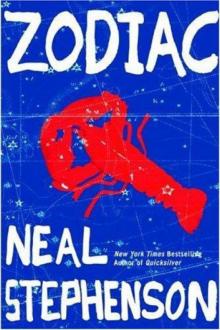 Zodiac: The Eco-Thriller
Zodiac: The Eco-Thriller The Mongoliad: Book One
The Mongoliad: Book One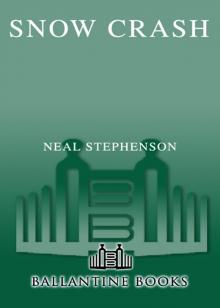 Snow Crash
Snow Crash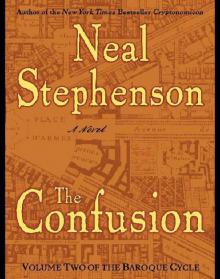 The Confusion: Volume Two of the Baroque Cycle
The Confusion: Volume Two of the Baroque Cycle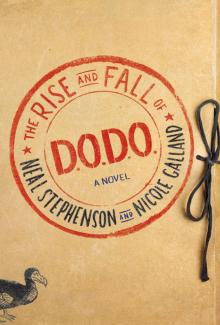 The Rise and Fall of D.O.D.O.
The Rise and Fall of D.O.D.O. The Diamond Age: Or, a Young Lady's Illustrated Primer
The Diamond Age: Or, a Young Lady's Illustrated Primer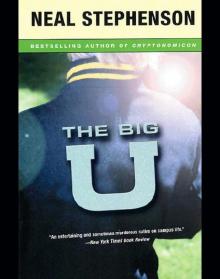 The Big U
The Big U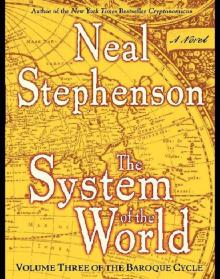 The System of the World: Volume Three of the Baroque Cycle
The System of the World: Volume Three of the Baroque Cycle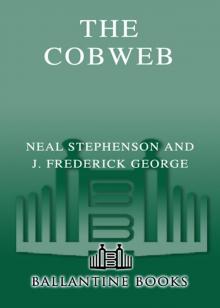 The Cobweb
The Cobweb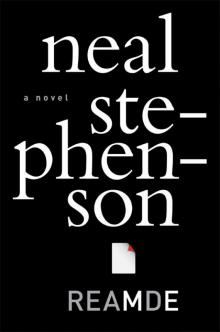 Reamde
Reamde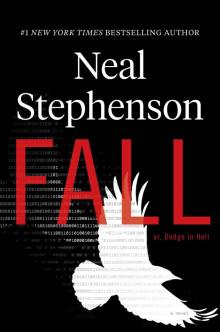 Fall; or, Dodge in Hell
Fall; or, Dodge in Hell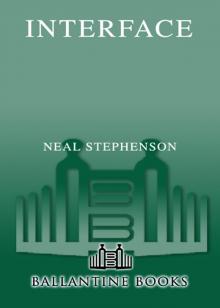 Interface
Interface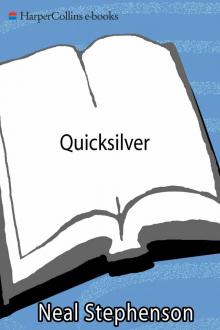 Quicksilver
Quicksilver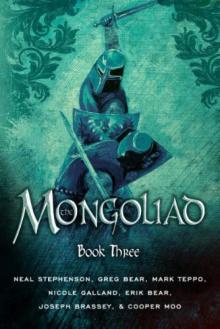 The Mongoliad: Book Three
The Mongoliad: Book Three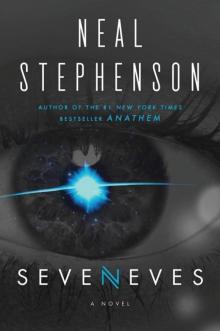 Seveneves
Seveneves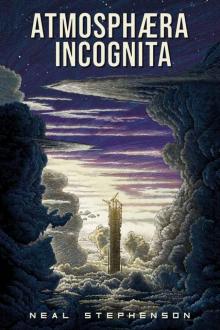 Atmosphæra Incognita
Atmosphæra Incognita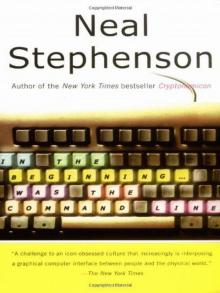 In the Beginning...Was the Command Line
In the Beginning...Was the Command Line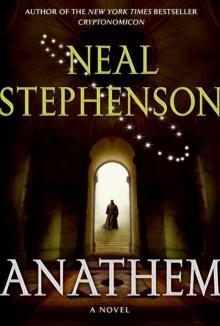 Anathem
Anathem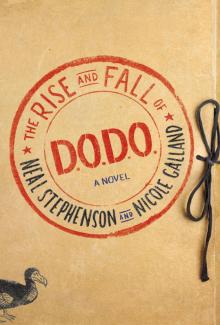 The Rise and Fall of D.O.D.O.: A Novel
The Rise and Fall of D.O.D.O.: A Novel The Mongoliad: Book Two
The Mongoliad: Book Two Diamond Age or a Young Lady's Illustrated Primer
Diamond Age or a Young Lady's Illustrated Primer THE System OF THE WORLD
THE System OF THE WORLD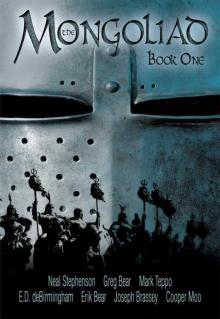 The Mongoliad: Book One tfs-1
The Mongoliad: Book One tfs-1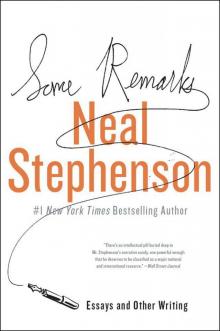 Some Remarks: Essays and Other Writing
Some Remarks: Essays and Other Writing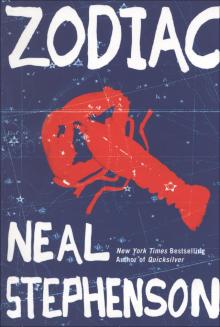 Zodiac
Zodiac Spew
Spew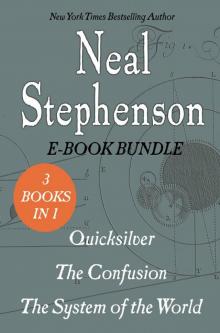 The Baroque Cycle: Quicksilver, the Confusion, and the System of the World
The Baroque Cycle: Quicksilver, the Confusion, and the System of the World The Diamond Age
The Diamond Age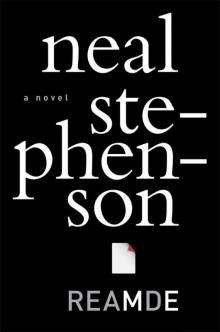 Reamde: A Novel
Reamde: A Novel In the Kingdom of Mao Bell
In the Kingdom of Mao Bell Mother Earth Mother Board
Mother Earth Mother Board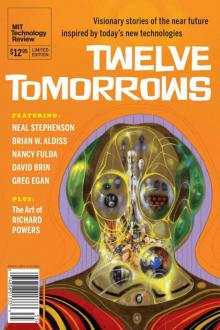 Twelve Tomorrows - Visionary stories of the near future inspired by today's technologies
Twelve Tomorrows - Visionary stories of the near future inspired by today's technologies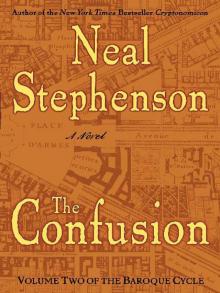 The Confusion
The Confusion The Great Simoleon Caper
The Great Simoleon Caper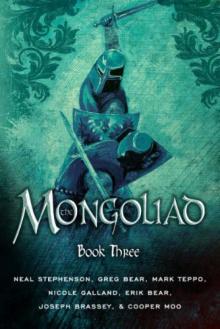 The Mongoliad: Book Three tfs-3
The Mongoliad: Book Three tfs-3